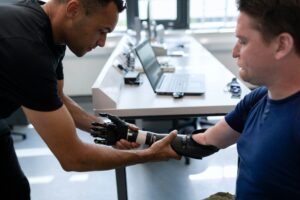The Oldest Medical Student
In this article, The story of oldest medical student explores the remarkable stories, their motivations, challenges, and the invaluable contributions they bring to the field of medicine.
The pursuit of a medical degree is often perceived as a journey embarked upon by young, fresh-faced undergraduates, but the reality is far more diverse and inclusive. While many aspiring doctors begin their medical education in their early twenties, there are individuals who defy conventional timelines and embark on this noble path later in life.
Redefining Expectations: The Ageless Ambition to Heal
-
-
Diverse Backgrounds and Life Experiences
The oldest medical students come from a wide range of backgrounds and life experiences. Some may have pursued other careers before deciding to pursue medicine, while others may have overcome personal challenges or life circumstances that delayed their educational journey. Despite their varied paths, they share a common passion for healthcare and a desire to make a difference in the lives of others.
-
-
-
Motivations and Inspirations
The decision to pursue a medical degree later in life is often fueled by deeply held motivations and inspirations. Some older students may have experienced a personal or family health crisis that sparked their interest in medicine, while others may have long harbored a desire to pursue medicine but were unable to do so earlier due to financial constraints or familial obligations. For many, the decision to return to school represents a lifelong dream finally coming to fruition.
-
-
-
Overcoming Challenges and Obstacles
The journey of the oldest medical students is not without its challenges. Balancing the demands of medical school with family responsibilities, financial obligations, and personal commitments can be daunting. Older students may also face skepticism or prejudice from peers and faculty who question their ability to keep pace with younger classmates. However, their resilience, determination, and life experience often prove to be invaluable assets in navigating the rigors of medical education.
-
Inspirational Stories: The Faces Behind the Numbers
-
-
Dr. Albert Schweitzer
Renowned physician, philosopher, and Nobel Peace Prize laureate, Dr. Albert Schweitzer, is perhaps one of the most famous examples of an older medical student. After achieving success as a theologian, philosopher, and musician, Schweitzer enrolled in medical school at the age of 30 and went on to establish a hospital in Gabon, Africa, where he devoted his life to providing medical care to the underserved.
-
-
-
Dr. Suzanne Koven
Dr. Suzanne Koven, a primary care physician and writer, pursued her lifelong dream of becoming a doctor later in life. After working as a journalist and raising a family, Koven enrolled in medical school at the age of 35. Despite the challenges of juggling medical school with her existing responsibilities, Koven persevered and graduated with honors. Today, she is a passionate advocate for diversity in medicine and a vocal supporter of non-traditional medical students.
-
-
-
Dr. Vera Cordeiro
Dr. Vera Cordeiro, a Brazilian physician and social entrepreneur, founded the organization Saúde Criança after completing medical school at the age of 42. Inspired by her experiences working with underserved communities, Cordeiro dedicated herself to improving the health and well-being of children living in poverty. Through innovative programs focused on holistic care and social support, Saúde Criança has transformed the lives of thousands of families in Brazil.
-
Embracing Diversity and Inclusion in Medical Education
-
-
Recognizing the Value of Life Experience
The stories of the oldest medical students highlight the importance of diversity and inclusion in medical education. Life experience brings a unique perspective and depth of understanding to the practice of medicine, enriching classroom discussions, patient care, and healthcare delivery.
-
-
-
Supporting Non-Traditional Students
Medical schools and educational institutions have a crucial role to play in supporting non-traditional students, including older learners, career changers, and individuals from underrepresented backgrounds. Providing flexible academic pathways, financial assistance, and mentorship opportunities can help non-traditional students succeed and thrive in their educational pursuits.
-
-
-
Promoting Lifelong Learning
The journeys of the oldest medical student remind us that learning knows no age limit. Whether embarking on a new career path or pursuing a lifelong passion, the pursuit of knowledge and personal growth is a lifelong journey that continues to evolve and unfold over time.
-
Celebrating the Diversity of Medical Students
The stories of the oldest medical students serve as a testament to the resilience, determination, and boundless potential of the human spirit. Their journeys inspire us to challenge conventional norms, embrace diversity, and recognize the inherent value of every individual’s educational journey. As we celebrate the accomplishments of the oldest medical students, we are reminded that age is not a barrier to achievement, but rather a reflection of the richness and diversity of human experience. In a field as dynamic and multifaceted as medicine, the contributions of non-traditional students are invaluable, shaping the future of healthcare and inspiring generations to come.





